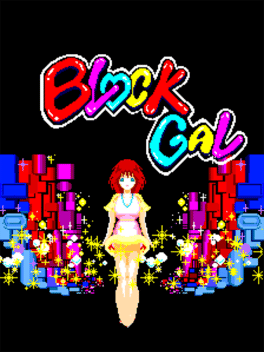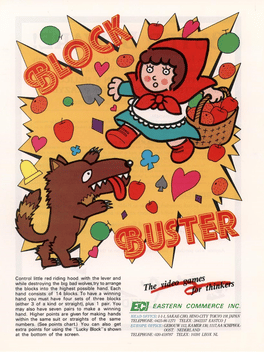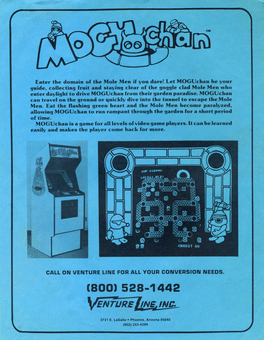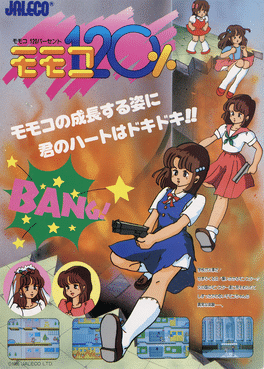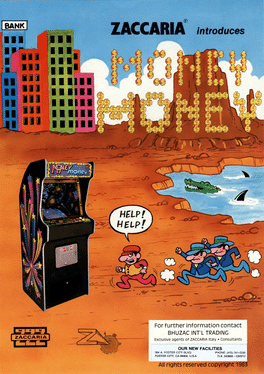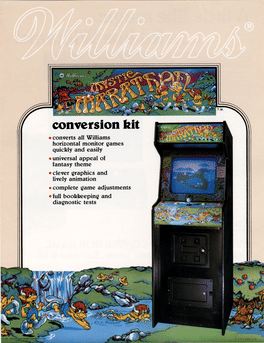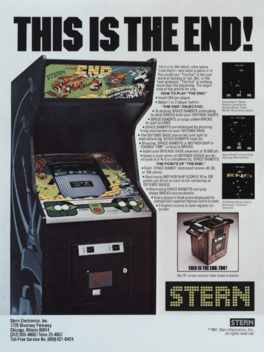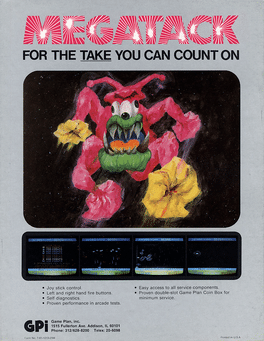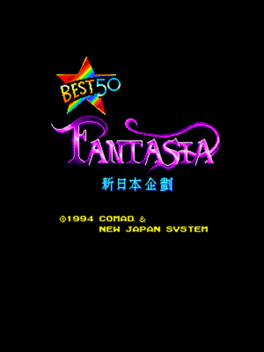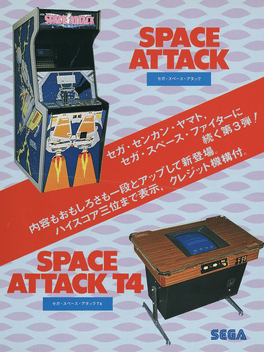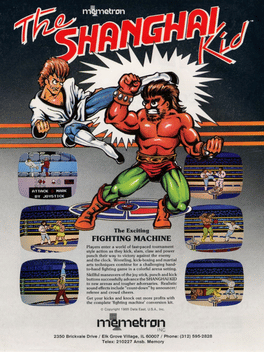Most Popular Arcade Games - Page 139
-
Black Panther
1987
Black Panther
1987
You play a black panther cat who has to claw or jump on enemies to kill them. You collect power-ups and defeat bosses to advance levels. -
Block Carnival
1992
Block Carnival
1992
An Arkanoid-like block breaking game. Instead of blocks, you break desserts and sushi. -
Block Gal
1987
-
Bloxeed
1990
-
Block Buster
1983
Block Buster
1983
A localized version of mahjong puzzle-action game Mr. Jong. Also known as "Crazy Blocks." The international versions replace various graphics in an effort to be more relatable and readable for Western audiences. Mr. Jong is replaced with Little Red Riding Hood, the ogres are replaced with Big Bad Wolves, standard mahjong suits are replaced with numbered fruit tiles, wind tiles are replaced by playing card suits, and dragon tiles are replaced with slot machine icons. -
Moguchan
1982
-
Momoko 120%
1986
Momoko 120%
1986
This platform game features Momoko, a young Japanese girl who ages by several years each time the player reaches the next level. The goal for each level is to quickly climb several floors by escalator, ladder, or trampoline in the building she is in before the fire that is below her reaches her. These level settings start out from grade school settings to office type buildings. While jumping over obstacles, she must shoot various alien-like enemies that come after her on each floor. She can upgrade her weapon by destroying certain enemies as well as entering special hidden doorways which feature minigames which require you to jump obstacles. These doorways can also be used as a short-cut, and sometimes they are mandatory to be used in order to climb to the next floor. When Momoko reaches the top floor of a level, she must jump onto a small blimp flying above her to beat the level. Momoko begins as a four-year-old and ages through five levels. The final level is a bonus chance in which she is a twenty-year-old bride -
Money Money
1983
Money Money
1983
On the first stage, your character wanders through a maze picking up piles of gold by walking over them. On the second level, jump from rooftop to rooftop to collect the money. On both the first and second stages, your character must avoid blue-clad thugs police? and spiders who will try to mug him and take his wealth. Collecting a potion on either stage will allow you to wipe out the thugs and spiders by touching them. On the third level, your character swims through a body of water to collect the piles of gold on the islands while avoiding the sharks and crocodile that lurk about. The final stage has you driving your jeep across canyons, jumping crevasses and avoiding boulders tossed at you. If you reach home, you are awarded a bonus based on how many gold bags you picked up, and the game begins again with increased difficulty. -
Mystic Marathon
1984
Mystic Marathon
1984
The game is a left-to-right footrace between the player-controlled creature and six controlled by the computer. Each island contains multiple paths, and the creatures have to swim the water between the islands, which is slower than running. Many obstacles slow the creatures down, including apple-throwing trees, lightning, sea monsters, giant clams, and sinkholes. There are also ways to move forward quickly, such as a hand that throws a character and caves that warp the creature to the exit. In addition to a joystick for movement, there is a jump button. The goal is to finish in the top three to progress to the next race. -
The End
1981
-
Megatack
1980
Megatack
1980
In the first part of each wave, space monsters descend from the top of the screen towards your ship, dropping bombs as they go. If they reach the bottom of the screen, they will start hopping towards your spacepod if they catch your spacepod, they'll eat it. In these rounds, your spacepod fires in three directions simultaneously straight up, and 45 degrees to either side. The eight types of monsters shown in the score table attack in the order shown for the first eight waves (i.e. wave 1 is all 100-point monsters, wave 2 is all 200-point monsters, etc.) wave nine is a mass attack of all eight types, and waves ten and up are randomly-chosen from the first nine types. Each space monster round contains a total of 25 monsters, though only eight will be on the screen at any one time. The second half of the wave starts out with a spinning space ring that drifts around the screen, growing in size if you shoot it, it splits into two smaller rings that go off in different directions and start growing again. If any ring rea -
Light Bringer
1994
Light Bringer
1994
Light Bringer (también conocido como Dungeon Magic), es un juego de arcade de Taito Corporation, perteneciente al género Hack and Slash medieval. A diferencia de la mayoría de los beat'em ups de ambientación medieval / fantástica, el juego cuenta con una vista isométrica, algunas plataformas (por lo general, cajas apiladas, mesas o rocas para subir y saltar), grandes personajes estilizados y ajustes de variables de sangre. Un malvado mago resucita a un espíritu maligno, conspirando para tomar el control del reino, y ha secuestrado a la princesa para usarla como sacrificio. Cuatro guerreros se adentran en el mundo mágico para salvar a la princesa de las garras del mago malvado: Ash el Caballero, Gren el guerrero errante, Cisty el elfo, cuya familia entera fue destruida por el espíritu del mal en el pasado, y el viejo mago Vold, contando con la ayuda del equipo de magia, iniciaran su odisea para rescatar a la princesa. -
Fantasia
1994
Fantasia
1994
Fantasia is a "Qix"-style adult puzzle game modeled heavily after the Kaneko game "Gals Panic!". It features photographic images of both Japanese and western models. The objective is to reveal 80% of the silhouetted girl's image within the time limit while avoiding the enemies. To complicate things, there is a bar with a pointer at the top of the screen. If the pointer dips below a certain level (indicated by the change in color) the image will change to that of a monster. The pointer slowly creeps towards the monster side of the bar over time and moves dramatically towards the monster side whenever the player reveals a significant piece of the silhouette. Revealing the un-silhouetted part of the image moves the pointer back towards the girl side of the bar. If a round is completed while the monster's image is shown then the round must be repeated. -
Space Attack
1979
Space Attack
1979
Space Attack is an arcade shooting game, released by Sega for VIC Dual hardware in 1979. In the US it is thought to have been renamed Super Space Attack - whether there are in fact two separate games is currently unknown, but the two are extremely similar and "Super" is often dropped in internal Super Space Attack documents. It's a Space Invaders clone and is almost identical to Taito's classic. It is completely identical to another VIC Dual Space Invaders clone, Alpha Fighter, sharing full color graphics and a "bonus" round (in which the saucer briefly descends from the top of the screen after clearing the rest of usual set of invaders). Space Attack has a different set of graphics to Alpha Fighter, however. Similar to versions of Space Invaders, the upright cabinets for Space Attack use a mirror to project the image onto a textured surface (in this case, a starfield), giving the illusion that there is a background while playing. -
Shanghai Kid
1985
Shanghai Kid
1985
A fighting game from 1985, notable for being the first to implement a combo system. It is the first game in the Flying Dragon (Hiryuu no Ken) series. -
Galaxy Gunners
1989
-
Power Spikes
1991
-
Las Vegas Girls
1994
-
Miss World '96
1996
Miss World '96
1996
Miss World is 96 Puzzle arcade game Qix genre of erotica and adult themes developed by COMAD. The goal in the game is to reveal 80% of the silhouette of a beautiful girl on the screen, preventing the monster caze the player in the attempt. Emepzar before the game the player can choose from a selection of beautiful girls, who will be aiming to show in each game. -
8 Ball Action
1984
8 Ball Action
1984
Use the joystick to move your aim dot around the table. Button causes ball to shoot at aim dot. Speed is determined by on-screen setting that changes between 3 speeds - Soft, Medium, Hard. Each pocket has a point multiplier. Score for each made ball is determined by the ball number x the pocket multiplier x the round number. You get three chances to make a ball before losing your turn. If you make a ball, you get another three chances to make another ball. A scratch causes a loss of turn.


